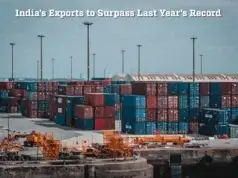
Executive VP and CEO,
IFC
IFC, a member of the World Bank, issued a 10-year, Rs.10-billion rupee bond (equivalent to $163 million) to increase foreign investment in India, mobilising international capital markets to support infrastructure development in the country.
The “Masala bonds” mark the first rupee bonds listed on the London Stock Exchange. They are the longest dated bonds in the offshore rupee markets, building on earlier offshore rupee issuances by IFC at three-, five-, and seven-year maturities. Proceeds from the offering will support a forthcoming infrastructure bond issuance by Axis Bank.
Tarun Bajaj, Joint Secretary, Department of Economic Affairs, India, said: “IFC is a key development partner as we continue to focus on deepening the capital markets. The IFC Masala bonds set a triple-A benchmark for offshore rupee issuances and pave the way for more foreign investment to help meet India’s private sector development needs.”
George Osborne, Chancellor of the Exchequer, UK, said: “Increasing our links with India has been a personal priority for me which is why I went to see Prime Minister Modi earlier this year to promote our economic relations and gave my backing to the new Gandhi statue in parliament square. If we can create these strong financial links between our two countries as well, then the ties will be deeper still which is why I have been personally pushing for rupee bonds to be issued in the UK markets and I am delighted this is now going ahead.”
Jin-Yong Cai, Executive Vice President and CEO, IFC, said: “This bond issue demonstrates the powerful role that capital markets can play in linking international savings to infrastructure investment. The strong demand from investors signals continued momentum for the Indian economy.”
The bonds were issued under IFC’s $2 billion offshore rupee programme. The bonds yield 6.3 per cent. J.P. Morgan is the sole arranger for the issuance.
IFC issued the bonds in London to leverage the city’s standing as a premier financial center. The vast majority of investors are European insurance companies.
Photos: Anthony Azavedo











